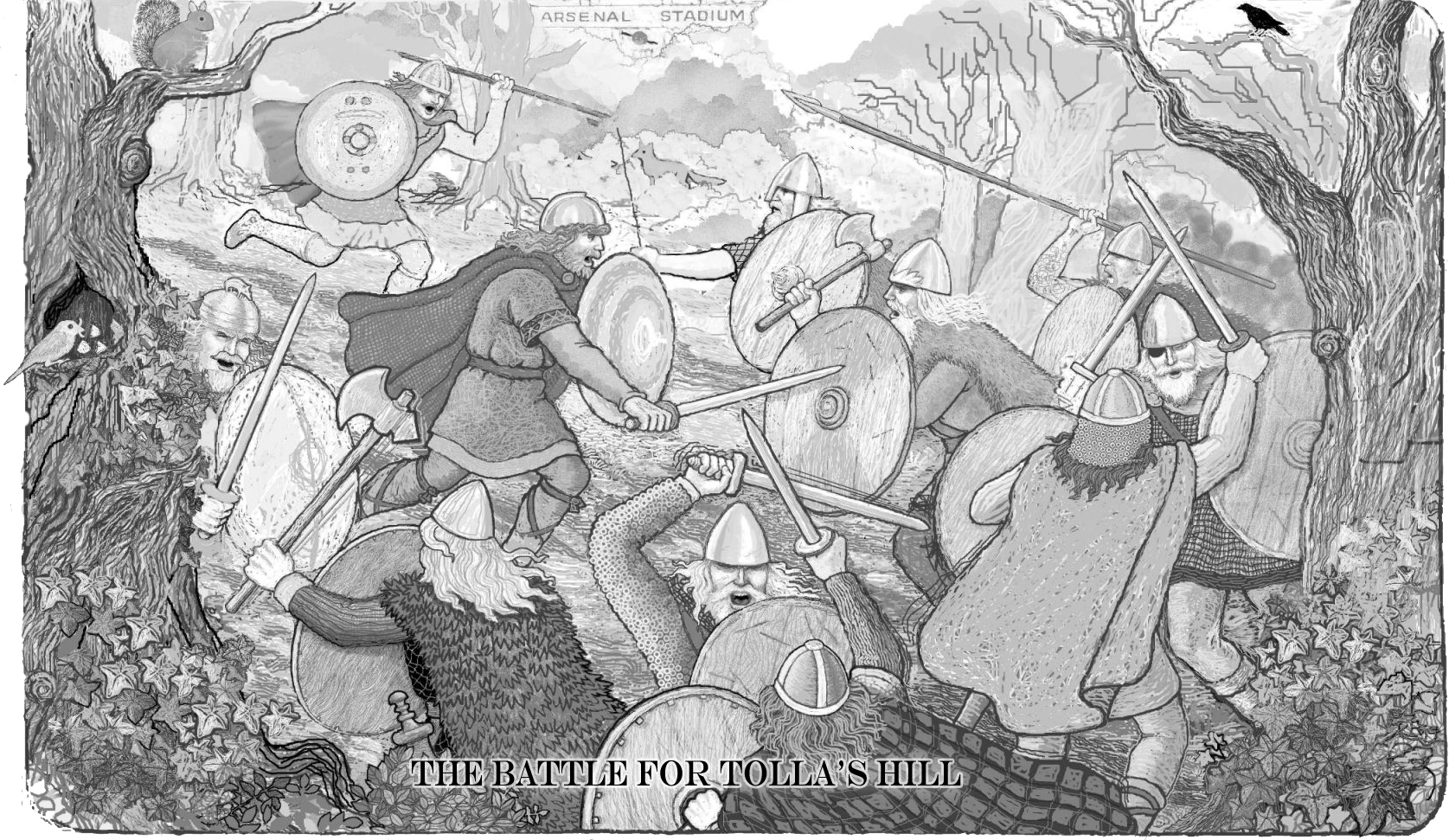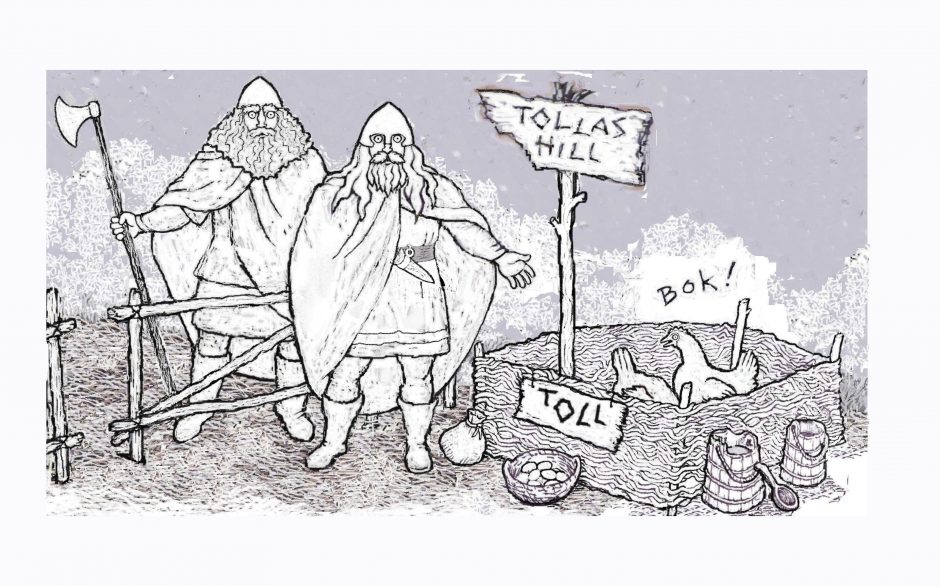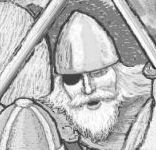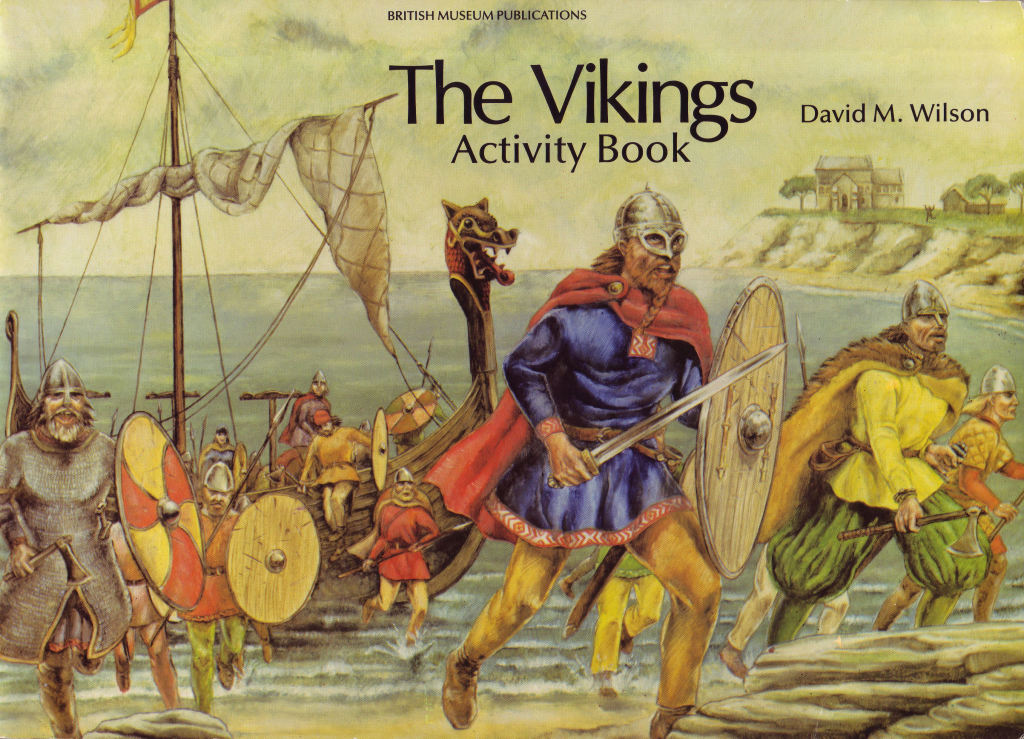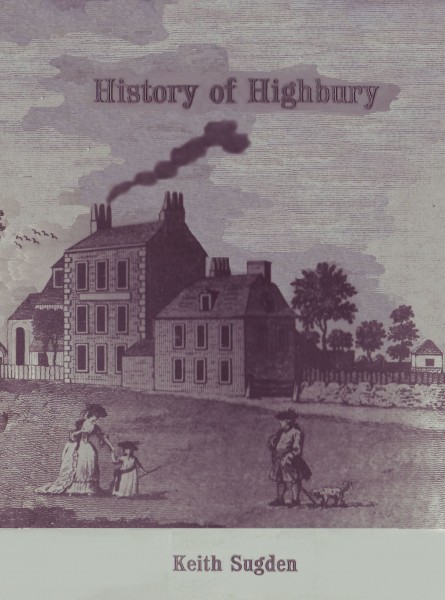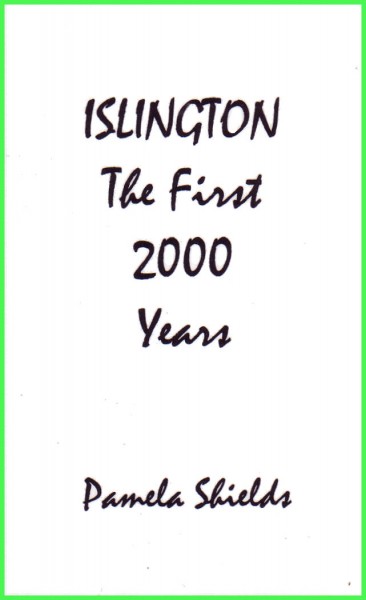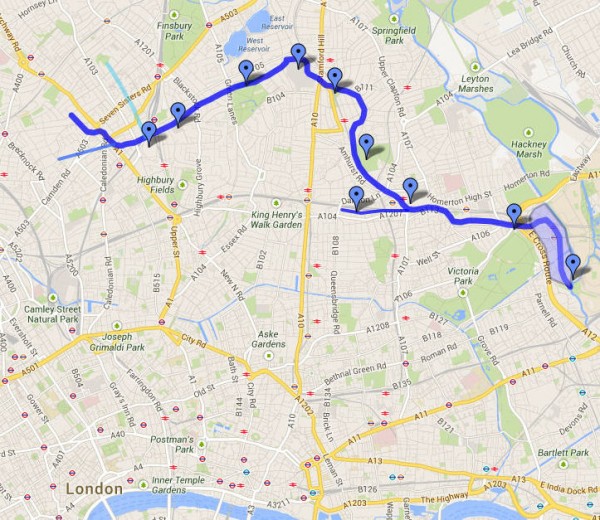 ‘There is the intriguing possibility that there was a settlement of Danes, or perhaps a battle between Danes and Saxons in Highbury Vale about 800AD.’
‘There is the intriguing possibility that there was a settlement of Danes, or perhaps a battle between Danes and Saxons in Highbury Vale about 800AD.’
Dr Keith Sugden, in ‘History of Highbury‘, places the site of this settlement or battle roughly where the old Highbury Vale Police Station stands, on what is now Blackstock Road.
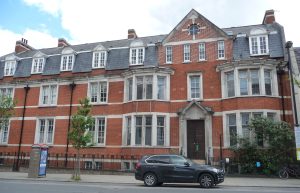
Old Highbury Vale Police Station, Blackstock Road 2016
He says that this road, an ancient right-of-way which ran between Tolla’s (now Highbury) Hill, down & over the Hackney Brook (Gillespie Road), across Seven Sisters Road & up to Stroud Green (Farm) was known as DANEBOTTOM LANE for the next ten centuries…
In 793, seven years earlier, Lindisfarne in the north had been sacked by ‘Northmen’. “In this year fierce, foreboding omens came over the land of Northumbria, and wretchedly terrified the people. There were excessive whirlwinds, lightning storms, and fiery dragons were seen flying in the sky. These signs were followed by great famine and shortly after in the same year, on January 8th, the ravaging of heathen men destroyed God’s church at Lindisfarne through brutal robbery and slaughter”… A detailed description of the invasion was written down by a monk, Alcuin, at the court of Charlemagne.
The Anglo-Saxon Chronicles * Translated and collated by Anne Savage * Phoebe Phillips Editions, Guild Publishing, William Heinemann Ltd, 1982
Were there any such fierce, foreboding omens over Highbury in 800AD? Did a party of Danes clash with Saxons living in the area? It was so long ago, & would have been so unlike the area as we know it – streets of Victorian terraced houses, shops, & the art deco facade of a famous football stadium that was converted into luxury flats.
Today’s Blackstock Road (the A1201) is smooth under its coat of tarmac, a busy transport artery & bus route (Nos 4 and 19). In 800AD it would have been earth, an ancient right-of-way through the old Middlesex Forest. There may have been Saxon dwellings nearby. If we keep the facade of Highbury Stadium’s East Stand in a bubble on nearby Avenell Road, but move its surroundings through the space/time continuum, we can travel back in time… through the World Wars, the Victorian era, the Georgians, the Middle Ages, & further back until we reach the year 800AD…
Wildlife of the time in the Middlesex Forest would have included the fox, the crow, the red squirrel & the wild boar. Both Saxons and Vikings admired the wild boar for its bravery, putting stylised images of it on their helmets & shields. Saxons & Vikings were trained in battle from an early age. How likely is it that there would have been a friendly welcome between Saxons living here & Vikings moving in, bristling with weapons?
A coming-together of Saxons and Danes might have been more animated.
If the right of way became Danebottom Lane, does it mean that the Saxons won the battle & kept the Danes to the bottom of the hill? A river flowed there & a Danish nobleman, Haca, owned land around it from about 450 AD. Might local Saxons have had to pay a toll to cross the river, & this land? In a farming, homesteading area, could Haca’s security guards be persuaded to open the gate for food or drink? Chickens, eggs, home-made mead, nettle soup?
This could have been a job for TimeTeam!
TimeTeam came into being after Dr Sugden had written ‘History of Highbury’, where he cited links between the event on Blackstock Road & a field on the east side of the hill, a short walk away. Named Danebottom Field in Domesday Survey, it is now called Highbury Quadrant and is covered with houses, gardens, a pub & a church. What lies beneath it? Evidence of a battle, or of a settlement? Would anyone living in the Quadrant have been prepared to let a respected television programme’s experts dig a trench in their garden?
If the Quadrant and the old Police Station were not here, in this built-up part of London, TimeTeam experts -archaeologists, historians & geophys operatives, with a CGI programme & Victor Ambrus illustrating Saxons and Danes in full costume – could have looked into the area and made, perhaps, some important discoveries. We could have had a smaller version of York’s Coppergate Viking Centre to mark the spot.
Vikings in the UK – York’s Jorvik Viking Centre
Battle sites are scattered across The British Isles. A famous battle might have its own museum, artefacts, website, even combat re-enactment. In the north of England, York’s Jorvik Viking Centre has been built on the site of a Viking town, where remnants of thousand year-old houses are displayed with masses of recovered artefacts. The public can visit the site & learn of its historic past.
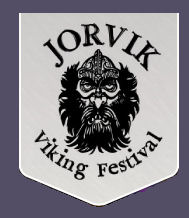 Viking Festival
Viking Festival
Each year at February Half Term, Jorvik & the York Archaelogical Trust host Jolablot, the ancient Viking festival held ‘to herald the coming of spring and the survival of winter hardships’. This is the largest Viking Festival in Europe, drawing over 40,000 visitors to York each year. Volunteers come from all over the globe to take part in combat reenactment at Jorvik.
Christmas flooding in 2015 damaged the Jorvik Viking Centre, requiring changes be made to the festival’s events. Participants & visitors are hardy folk, however, & youtube videos show what a draw this week-long winter event has become, whatever the weather.
2016: The Vagabrothers’ visit to Jolablot on youtube:
2018: Combat reenactment, Ivar the Boneless & a fireworks finish
2019: The Theme of Jolablot 35 was ‘The Untold Story of Women in the Viking Age’.
2020: Jolablot 36, with its theme of Voyages of the Vikings, was held during a week of wild weather as Storm Dennis battered the country with rain & high winds. kodalenpartyof2 chronicled one young couple’s visit to York for the Festival.
L O C K D O W N
2021 – N O V I K I N G F E S T I V A L
For the first time in 35 years York did not hold its Viking Festival. Due to the Covid-19 situation an alternative event, That JORVIK Viking Thing, was devised. It included livestreamed Viking-themed events, storytelling & an online version of the JORVIK Viking Symposium, with smaller tours & a traders’ market in the city centre.
———————————————————————————————————————————-
28th MAY to 1st JUNE
Jolablot 2022 was postponed due to concerns over large gatherings & availability of staff. A rescheduled Festival took place in York from 28 May to 1 June 2022. This was Jorvik’s video trailer for the event
YORK VIKING FESTIVAL 2024
MONDAY 12th to SUNDAY 18th FEBRUARY
jorvikvikingfestival.co.uk
JORVIK Viking Festival 2024 – Your guide to all the fearsome fun
Saxons V Danes ~ Combat Reenactment in Highbury?
Our own local London Danes, from landowner Haca to those in the possible battle on Blackstock Road, had no monkish scribes to record their actions for posterity. What might be buried under the Police Station or Highbury Quadrant? Why couldn’t those international combat re-enactment volunteers perform in Highbury, as well as York? Why could we not have just one day a year – one weekend – to commemorate what happened on Danebottom Lane so long ago?
Historical reenactment societies on the internet have storytellers, craftsworkers & other specialists. Some, such as Hrafnslith (Troop of the Raven) based in Dorset, & Regia Anglorum have their own living history encampments. Some will come to schools to talk or perform combat reenactment for the National Curriculum Key Stage 2 (Settlers and Invaders).
Historic UK‘s History Magazine has a reenactors directory covering 11 time periods on its website. Here you can find details of historical reenactment in this country, showing which groups might come to your school, mount a public display or be available for film work.
Of 136 groups listed on the website in 2015, 13 were Viking and Saxon specialists : Ealdfaeder, Ordgar Dark Age Reenactors, Wodens Hearth, Croix du Nord, Wirhalh Skip Felagr, Reenactment Mercenaries, Wuffa, Vikings of Middle England, Nordmanni, Longship Trading Company, Kernow Anwyn, WEOROD, Mercia Sveiter.
Each group doing battle reenactment follows a set of rules. Health and Safety demand a helmet; other than that, scores are higher for the wearing of armour. Some groups allow a tap of the sword on a combatant’s shoulder as a ‘hit’. The Huscarl System allows only one hit, anywhere, & the person who is hit takes no further part in the combat.
The Battle of Carham 2018 . lighthouse movie show . Combat reenactment sample
Rules for The Vikings!, Regia Anglorum, Swords of Dalriada & Jomsvikings & the HuscarlSystem are described by martial arts trainer Keith Farrell, who teaches HEMA (Historical European martial arts) & coaches instructors. See Keith on youtube in the final of the Edgebana Open Broadsword Final 2016.
https://www.youtube.com/watch?v=AFfUkQFlxOQ
https://en.wikipedia.org/wiki/Historical_European_martial_arts
http://www.historic-uk.com/LivingHistory/ReenactorsDirectory/Page-14/
Timeteam may have finished its run as a series on Channel 4, but special programmes might be created for certain sites – such as Highbury?
We must assume that we will get no archaeological dig under The old Police Station, which is being redeveloped (December 2016). Blackstock Road is under constant use. Health and Safety would surely rule out the staging of any battle reenactments there – all those sharp weapons in close proximity to shops and spectators, too risky. But could we not host something in nearby Emirates Stadium? In summer, say, after the Arsenal year, when no other event is on? And have a little dig on Blackstock Quadrant?
Set near a site of historical interest, our annual Summer Combat Reenactment at The Emirates – Saxons v Danes might have a Viking theme running through the neighbourhood. Our local pubs might have Scandinavian and artisan craft beers, & mead, on offer. Saturday could be teaching day at the Emirates, with coaches holding reenactment seminars, workshops and tutorials. Sunday could be the Saxons v Danes Reenactment.
For now this will have to remain a Fantasy Event. Whatever artefacts may lie beneath our Highbury gardens, a visit to York for Jolablot may be as close as we can come to Viking encounters.
The Vikings Activity Book, by David M. Wilson, illustrated by William Webb, British Museum Publications, 1989. Includes line drawings of life at home in a Viking settlement; the Viking alphabet & its letters, the runes; Viking dress & jewellery; & a Viking Voyage game (‘Blown on to enemy shores – go back 2; Pillage a monastery – go on 3’).
History of Highbury by Keith Sugden
Published by The Islington Archaeology and History Society,
1984 (includes a guided walk)
The author of this book, President of the Islington Archaeology and History Society, did extensive research into the area. You may find yourself wanting to further investigate other subjects he has delved into, from astronomy to feudalism to Victorian entertainments & puddings, such as the syllabub…
ISLINGTON The First 2000 Years by Pamela Shields
Highbury’s past is here, as well as that of Islington. The author has been a journalist, an art teacher & a tourist guide in Islington (where she lived for ten years), having tutored the Guiding for Tourists Course at City University. Articles in the book appeared in the Islington Gazette between 28 Oct & 31 Dec 1999.
The book gives us a changing picture of Islington, from its geology in the Thames Basin & the arrival of the Celts (450 BC) to 1999 & beyond. Humans, famous & infamous, have lived here over the years. Pamela Shields tells of a river flowing west to east from Isledon Rd down Gillespie Rd, to Riversdale Rd, through Clissold Park, Abney Park, & on to the River Lea. It became known as the Hackney Brook, named for Danish landowner Haca.
London’s Lost Rivers by Paul Talling
The Hackney Brook, the river flowing from west to east across what is now Highbury Vale, would have been a barrier for humans to cross. Part of the Danish owner’s land? Paul Talling looks at the Hackney Brook as a tributary of the River Lea; it is now contained in a pipe underground, as are other lost rivers of London. The author conducts guided walks of the city’s lost rivers, streams, canals, docks & wharves, much enjoyed by those who have gone on one. Tickets, limited to 20 per walk, usually sell out months in advance. See website for guided walks mailing list.
“The time estimate of walks is very rough as I’m in no hurry and these usually result in a social in the pub afterwards. These walks go ahead regardless of the weather – rain or shine, heatwave or arctic conditions! Please note that they are wholly above ground and there will be no subterranean trips down to the sewers! … I have public liability insurance. Well behaved dogs and children are welcome on all tours.” Paul Talling
http://www.londonslostrivers.com/authors-guided-walks.html
London’s Lost Rivers by Paul Talling (ISBN: 9781847945976) .
There is a Google map provided, with the course of the Hackney Brook in blue:
Reading the Landscape of Europe by May Theilgaard Watts, Harper & Row, 1971
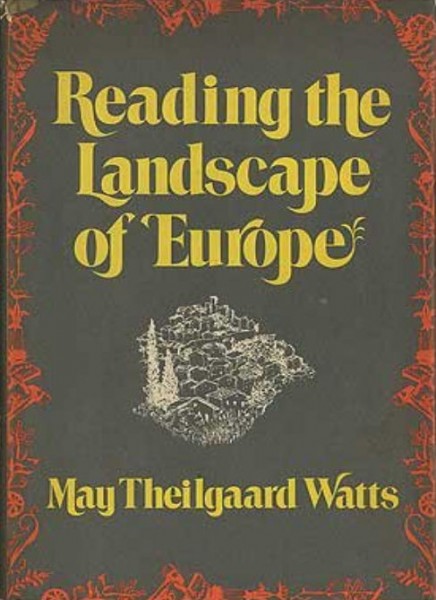
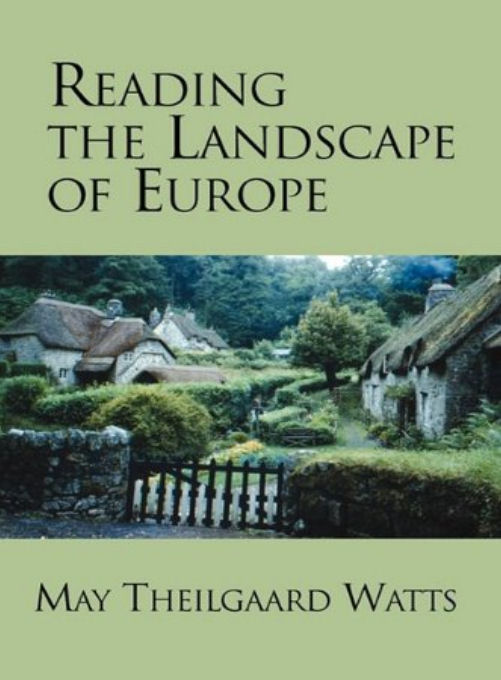 This look at Europe by Danish-American naturalist May Thielgaard Watts includes the Vikings’ homeland & what they left behind to explore other lands. May T. Watts writes of Denmark’s bogs, its seacoast & the fairy tales of Hans Christian Anderson.
This look at Europe by Danish-American naturalist May Thielgaard Watts includes the Vikings’ homeland & what they left behind to explore other lands. May T. Watts writes of Denmark’s bogs, its seacoast & the fairy tales of Hans Christian Anderson.
